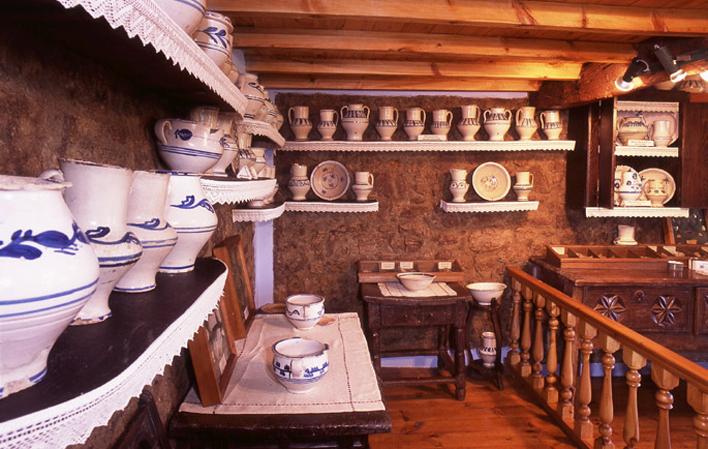
Casa-Museo de la Cerámica Popular Asturiana
- Location Cabranes Oriente de Asturias
- Address Address: ■ 33529 - Piñera
- Phone Phone: 652 535 589
- Email Email: museopinera@cabranes.es
- Site: Visit
- Schedules and prices: View
Info
La vivienda que alberga el museo fue usada como vivienda de labradores, contando, en su interior, con la distribución usual de cuadra y tenada, para los animales, dentro de la misma vivienda. En la actualidad, esa primitiva distribución fue suprimida para dar lugar a una vivienda y un museo, dentro de la misma construcción.
La vivienda consta de tres plantas, partidas en su mitad por una pared que separa la casa del museo, pudiendo comunicarse ambas partes. Posee, pues, dos fachadas con accesos independientes.
La fachada posterior, con dos grandes ventanales en la primera planta, y una delicada marquesina que acoge el vano de entrada, da paso al Museo de la Cerámica Popular Asturiana.
El interior presenta tres plantas en las que se exhibe la cerámica.
El museo consta de tres plantas que acogen una importante e interesante colección de cerámica popular asturiana, toda ella perfectamente clasificada, documentada y expuesta.
Primera planta:
En esta planta baja está expuesta toda la cerámica negra procedente, principalmente, de los alfares existentes en el concejo de Piloña, zona central de Asturias. Igualmente, encontramos una serie de mobiliario de la época.
Segunda planta:
Planta dedicada, única y exclusivamente, a la Cerámica del Rayu, de Vega de Poja (Siero). Cerámica, por tanto, blanca y azul, vidriada.
Tercera planta:
En esta planta se halla el archivo formado por toda la documentación del museo, así como trabajos relacionados con el tema y una interesante biblioteca a nivel regional. Posee, además, piezas varias, y otra serie de artilugios antiguos ocupando los parámentos que lo encuadran. En esta planta se ubica la exposición de útiles artesanales: enseres de madera para la elaboración y transformación de productos, principalmente, aquellos que nos ofrece la naturaleza y los obtenidos por el trabajo del hombre campesino para su propia supervivencia.
Se realizan numerosas exposiciones relacionadas con la cerámica tradicional, procedente de alfares o de colecciones particulares. Estas exposiciones también tienen lugar en el Café Gran Peña, de Villamayor, propiedad de Leopoldo Palacio Carús.
Schedules and prices
Lunes a sábado: 15:00-18:00 h
Domingo cerrado.
Individual: 2 €
Grupo (+15): 1 €
Los grupos pueden pedir cita previa.
How to get here
First Name: Casa-Museo de la Cerámica Popular Asturiana
GPS: 43.398548,-5.421466
Address: ■ 33529 - Piñera
